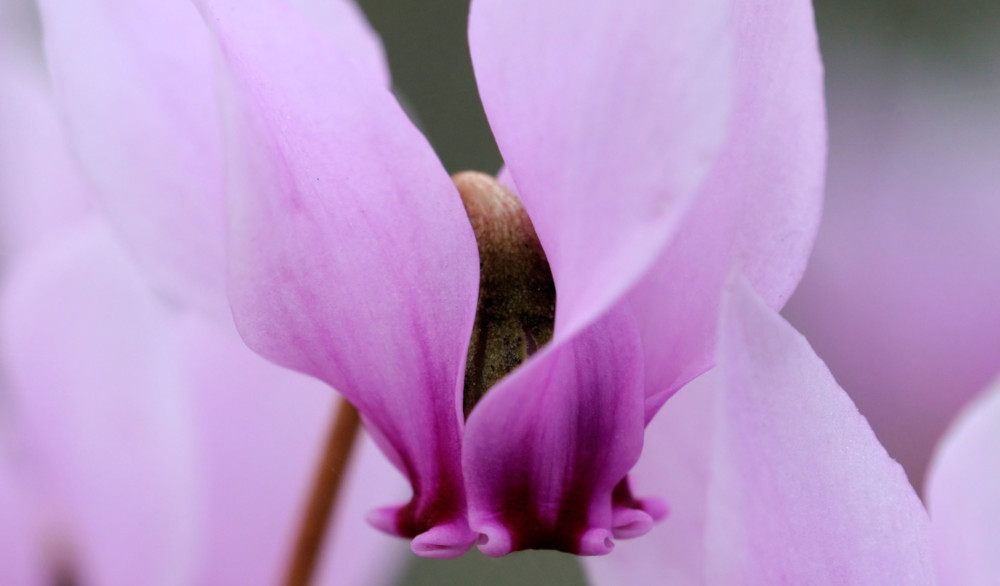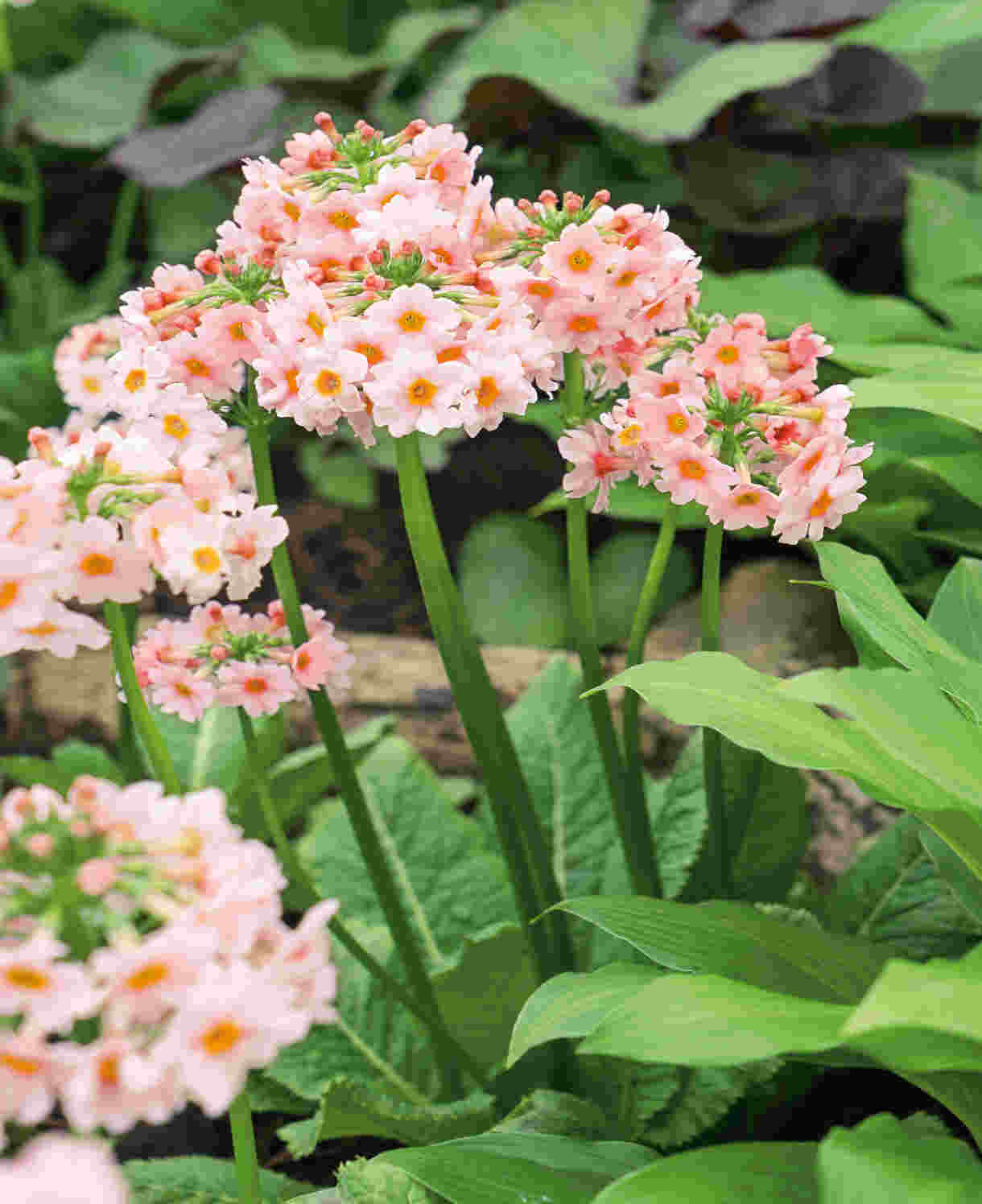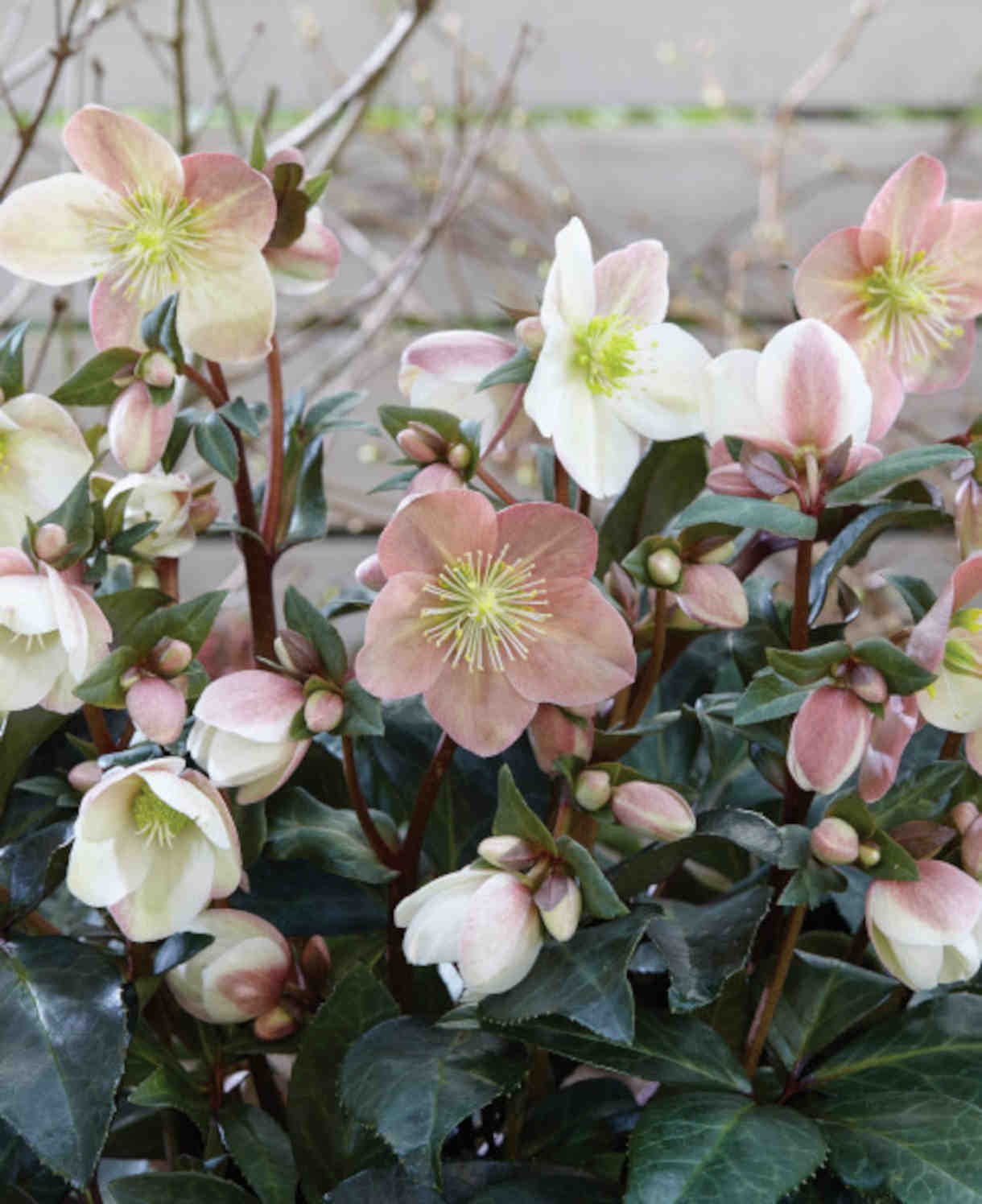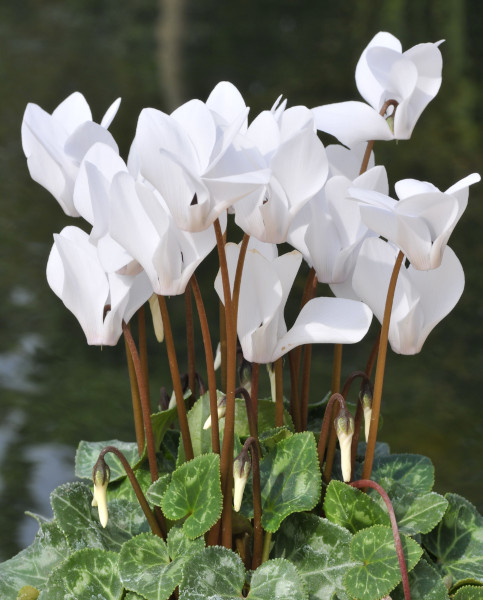How to grow Cyclamen
Brightening dark autumn and winter days into early spring, Cyclamen are a delightful tuberous perennial with dainty, nodding blooms.
Often fashioning dark markings at their base and mottled green-silver foliage, this gentile and attractive plant is perfect for naturalising beneath trees and shrubs where it will make a carpet of incredible colour. However, Cyclamen also look amazing in a wildflower or rock garden, or grown in containers, where they will reach an approximate height and spread of 8-15cm.

Key Information
Soil pH
Position
Hardiness

How to plant Cyclamen
Place the tuber 3-5cm beneath the soil surface, plant with the rounded side down – the top has a light indentation from where the stem will sprout. Gently re-cover with soil and lightly water to settle in. As the plant starts to grow, it is not unusual to see the tuber pushing to the surface and, as long as the roots are established, this will do no harm.
If the soil in your planting area is a little heavy, we would advise you to improve the drainage by adding horticultural grit or sand. The same applies for container planting as the tuber do not like sitting in wet soil (although they do like some moisture to promote healthy growth). Cyclamen will not over compete with other plants and shrubs, so will happily share root space with other plants – including shrubs and trees. On a cautionary note – do not plant too deeply as this will prevent effective flowering.

What to plant with Cyclamen
Cyclamen are perfect associates of other early-flowering woodland plants such as snowdrops, winter aconites, primroses and Hellebores. As they have such striking foliage as well as eye-catching flowers – a carpet of Cyclamen makes a wonderful display on its own – either a single colour or on mass with different colours and varieties for a longer display.



How to care for Cyclamen
Cyclamen dislike excessive feeding, so use leaf mould or compost to encourage healthy growth and development. When the leaves start to wilt at the end of the season, apply an extra layer of mulch to protect the roots over the warm summer season while the corms are dormant. You will see them re-sprout again in the autumn.
Cyclamen are intolerant of excessive watering, so ensure that you are watering your plant when deemed necessary, ie when the soil is dry to the touch, taking care to not overwhelm the soil with undue moisture. Equally, do not let the soil dry out as this will deter your plant from growing to its optimum size.
It is possible to propagate Cyclamen by seed as soon as they become ripe. It is often recommended to soak seeds for 10 hours prior to sowing, as this will encourage regrowth.





